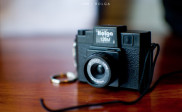“Light can be hard – Light can be soft, it’s how you use it that matters”
Photography is all about light. It is a simple statement on the face of it, but as with all things to do with photography, this statement comes with any number of caveats, that given a level of understanding serve to propel the taker simply from a “snapper” to a photographer. I wish to make one assumption here and that is a knowledge that light travels in straight lines.
To be used well, light needs no real level of understanding on a physical level. The fact that it forms part of the electro-magnetic radiation spectrum is irrelevant when taking pictures. That it is formed by photons of no mass, matters little as you compose a shot in your viewfinder. What does matter to the photographer is experience with and an understanding of, what any given light source will do at any given time, under any circumstances. This then becomes the invaluable part of the knowledge of light when holding a camera in your hands, preparing to shoot a frame.
Knowing the difference between hard light and soft light, that is the key. Any light source can be at the same time, both of these things. Let us pose this situation then as a means to begin our understanding. A hard light is a small light source; a soft light is a large light source. In essence, a small (hard) light source will produce sharp edged, dense shadows whilst a large (soft) light source will produce shadows of an indistinct edge and with very little density, sometimes to the point of none at all.

Photo by Joe Atinsk
Let us take the sun as our example: Our biggest and brightest light source. Biggest, therefore soft? but why then are hard crisp shadows cast by the sun on a cloudless day if it is so big? The caveat here is that even though it is an enormous source of light, the sun is so far away from the subject of the photograph that it actually becomes a small light source, thus hard shadows. Now in order to convert a hard source into a soft source we must diffuse that light, thereby producing a source that acts on our subject from multiple angles. So, how do we go about diffusing the sun? Turn around, that building that was your background; well turn that into your reflector. Place the subject so they are now facing away from the sun but toward the big wall of the building. The light falling on the subject is now diffused, now coming from many angles, a large source and thus soft.

Photo by Joe Atinsk
The photos above are an example of putting a little knowledge to huge affect at no cost!
It is possible to achieve this same result in many ways; if you carry a reflector with you, and you happen to have a spare body to hold it (don’t forget the subject can often hold their own reflector if the shot is tight enough) Wait for a cloudy day maybe, one of the best diffusers of the sun are clouds, remember, soft shadows, soft light, but there is no better solution than having the answer in your head as you must get that shot right now.



